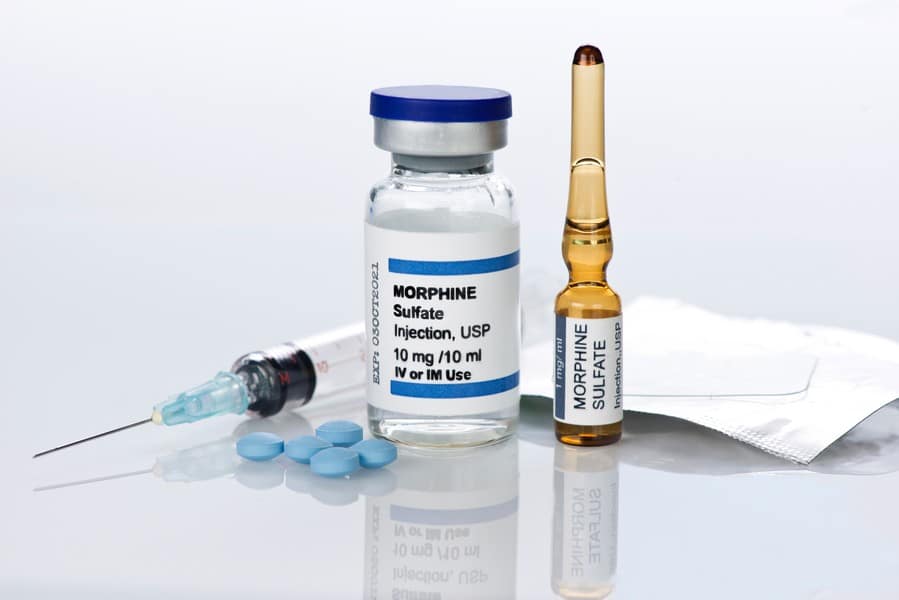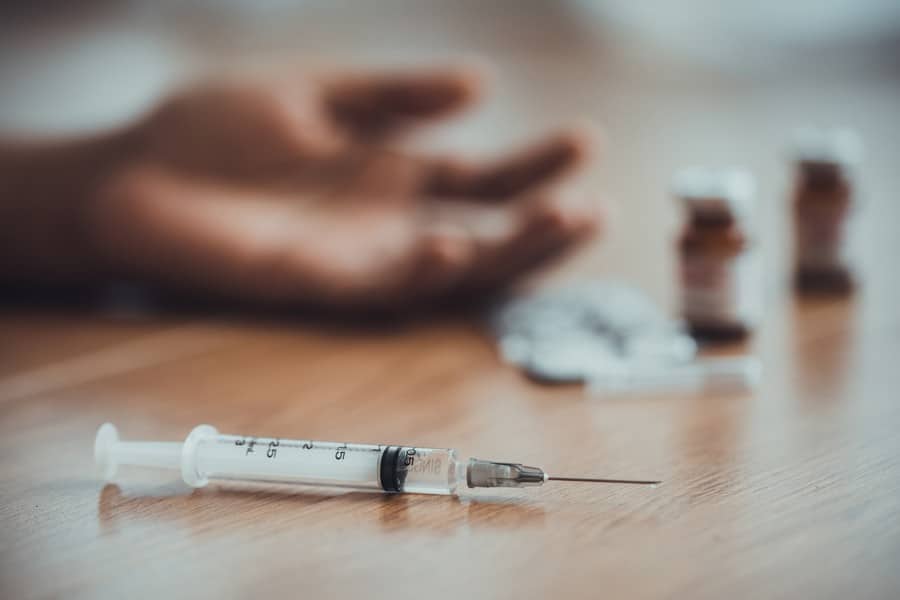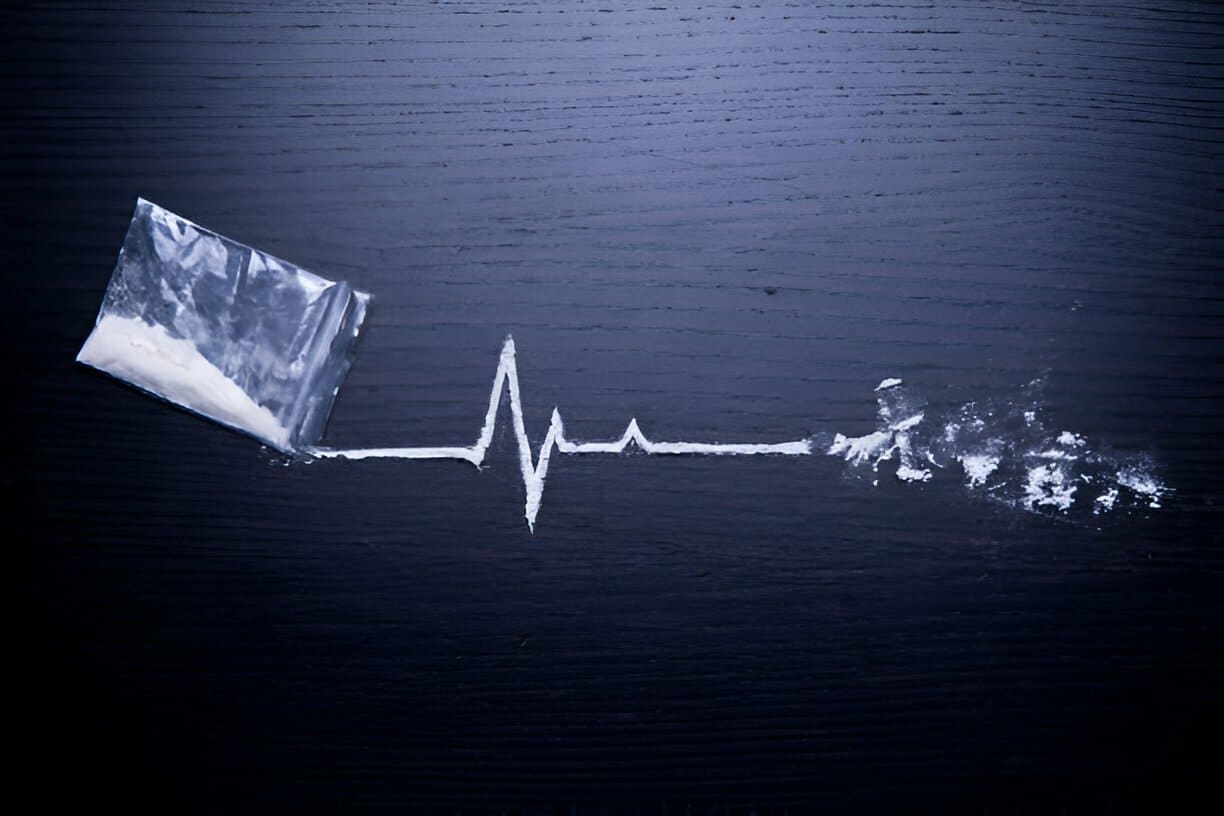Morphine is a naturally occurring chemical that can be obtained from the Opium poppy plant or concentrated poppy straw. Because it is derived from the same plant as heroin, it has a chemical makeup comparable to all opioid drugs.

Morphine is a type of opiate that is used to treat pain. Morphine, named after Morpheus, the Greek deity of dreams, induces euphoria, typically described as a dreamy condition. Morphine has the potential to be highly addictive due to the rapid development of tolerance to it. Morphine has a high potential for abuse due to its euphoric effects and ease of access.
If your loved one needs support dealing with an Alcohol Addiction, contact us today on 0800 999 1083. We can help you by recommending treatment options.
Morphine is a Schedule II controlled substance used to treat moderate, severe, and chronic pain. It’s also used to manage pain following major surgeries, cancer-related pain, and shortness of breath in patients nearing their end.
The medication is available as a pill, syrup, or injectable. Morphine can even be smoked in rare situations.
Morphine pills have had abuse-deterrent coding put to them in recent years, making them impossible to crush, snort, or inject. While this has lowered the possibility for prescribed Morphine to become addictive, it has had little effect on illicitly made Morphine.
Morphine is also known as:
Morphine is a highly potent and highly addictive drug. It’s easy to become addicted to it, whether you abuse it or use it as prescribed by your doctor. The difficulty is that it’s practically impossible to predict when you’ll develop an opioid addiction. You may begin using it merely for fun, but you may quickly discover that you cannot stop.
In most cases, the body adapts to the presence of opiates such as morphine in as little as two weeks of use. The yearning effects caused by consuming or abusing the drug may urge you to use it repeatedly.

Causes and risk factors for morphine addiction include:
Genetic: Morphine, like all opioids, has a substantial genetic component. Individuals with first-degree relatives who have had a morphine use problem are much more likely than those without a similar family history to have the same addiction or another opioid use disorder.
Brain Chemicals and Brain Structures: The concentration of some pleasure-inducing molecules in the brain is affected by morphine. Morphine increases the amount of these substances circulating in the brain by stimulating the structures that release them. Endogenous opioids, created spontaneously in the brain, are another source of opioids. Morphine binds to endogenous opioid receptor sites and lowers the excitability of neurons. This is thought to contribute to the euphoria associated with morphine use.
Environment: At some point in their lives, everyone feels overwhelmed by stress. When we are overloaded with anxiety over a long period, our bodies get stiff, resulting in muscular and joint pain and worry about the future. Morphine soothes pain, and decreases fear and anxiety, in addition to causing euphoria. If someone has been exposed to morphine and their traditional coping techniques aren’t working, they may turn to this opiate because of its effects on mood, anxiety, and pain.
Morphine stimulates the release of endorphins like dopamine. Dopamine is a neurotransmitter in the brain that causes a pleasurable feeling. This is simply a transient sensation, so once it has faded, you can seek the same ‘high’ again. This addiction cycle is similar to that of many other legal and illegal drugs.
Morphine tolerance develops over time, just as it does with other drug addictions. This means that your body will need a larger amount of the drug to achieve the same ‘high’ over time. When you use morphine more frequently, you may develop withdrawal symptoms, which means you may experience physical and psychological problems when you don’t take it. These are
Some individuals who abuse morphine may be placing themselves in danger of developing a mental health issue, while others may already have one and use morphine to numb the symptoms. They will often start to experience drug cravings after a period of self-medication. Cravings are an obsession that can lead to a person becoming dependent on morphine to get through the day.
In addition to drinking, morphine addicts frequently suffer from several co-occurring disorders. These are some of them:
The relationship between mental illness and addiction is complicated. When a mental health illness coexists with addiction, users must seek treatment from a facility that can handle both disorders in a dual-diagnosis programme.
The most apparent physical indications of morphine use and addiction are dilated pupils and poor coordination. You might also notice signs of restlessness or an excessive feeling of brief happiness. Other physical indicators of morphine abuse and addiction include significant weight loss, low blood pressure, heavy or forced breathing, stomach cramps, and constipation (which commonly occurs).
Nausea or vomiting are other common side effects of morphine addiction and are caused by the small intestine’s sluggish peristaltic activity. Because the medicine slows down your respiratory system, you may experience breathing problems. It is even possible to suffocate from a morphine overdose.
It may be challenging to distinguish morphine abuse and addiction’s psychological indicators because they are similar to other diseases or mental problems. Depression, for example, may have been prevalent before you became hooked on morphine.

In some circumstances, determining whether the depression is caused by morphine addiction or a pre-existing illness would be challenging.
Anxiety, heightened paranoia, despair, feelings of emotional instability, and unexpected mood shifts are some of the most prevalent psychological/emotional indications of morphine addiction, which means you could be happy one minute and strangely sad the next.
Some of the most prevalent symptoms are anxiety, depression, sweating, restless legs syndrome, dizziness, and nausea.
Morphine is a narcotic substance that is frequently abused for its pleasant effects. Chronic pain patients are more likely to misuse their medicines, which raises their risk of developing a substance use disorder.
Morphine’s most common side effects include:
As with other prescription drugs, it is considered abuse when someone consumes Morphine without a prescription or without following the rules dictated in a prescription. It is a strictly regulated substance, even though it is lawful when prescribed. Possession of Morphine without a prescription is illegal, and the severity of the penalty varies depending on the amount of the substance in question.
Morphine abuse and addiction can cause both reversible and irreversible brain and bodily changes. Excessive or extended use of morphine can harm practically all of the body’s systems and organs. The inability to feel pain (analgesia), eyesight issues, slowed reaction time, sleepiness, impaired gastrointestinal motility, and the likelihood of seizures are some of the ways that morphine addiction can impact the body.
Morphine also enhances the reward response in the brain. It encourages the brain to release large amounts of dopamine, which rewards you with pleasant feelings every time you use it. Repeated use makes your brain and body need morphine to the point where you may have severe negative effects if you don’t take it.
The most severe risk of consuming morphine for an extended period is morphine addiction. Being addicted to morphine can ruin your life and the lives of your loved ones by forcing you to prioritise the acquisition and use of morphine over anything else. Overspending on morphine might lead to financial troubles. You may lose interest in your family, friends, and work duties, which may lead to you engaging in illegal activity, like theft, to obtain the drug.
When you continue to use morphine, and your addiction worsens, you may have severe withdrawal symptoms when you are unable to consume it. You may also disregard your health, mainly if your issues are linked to morphine use. Furthermore, injecting morphine can lead to illnesses such as Hepatitis-C and HIV/Aids due to using contaminated needles.
Morphine works by depressing the Central Nervous System (CNS). Those who abuse heavy dosages of Morphine run the risk of overdose. Morphine overdose symptoms include slurred speech, inattention, acute tiredness, fever, high blood pressure, increased thirst, lower back or side pain, decreased responsiveness and respiration, extreme lethargy, swelling of the face and limbs, lack of mobility, slow breathing, muscle cramps, spasms, pain, and stiffness. A morphine overdose can result in unconsciousness, coma, or death due to decreased respiration and is unfortunately responsible for several overdose deaths yearly.
Some individuals who abuse morphine may be placing themselves in danger of developing a mental health issue, while others may already have one and use morphine to numb the symptoms.
In addition to drinking, morphine addicts frequently suffer from some co-occurring disorders. These are some of them:
The relationship between mental illness and addiction is complicated. When a mental health illness coexists with addiction, users must seek treatment from a facility that can handle both disorders in a dual-diagnosis programme.
Numerous treatment options have proven to be effective for individuals addicted to opioids like morphine, fentanyl, heroin, or codeine.
The treatment plans generally begin with detoxification/withdrawal, which professionals can and should accompany due to the dangerous nature of opioid withdrawal. Following detox, the second stage generally addresses the underlying causes of addiction. This will teach the individual how to understand the reasons that lead the drug consumption in the first place. This will also allow them to address mental health issues and begin to recognise triggers for substance abuse, among other skills that help maintain sobriety.
Recovery is generally a lifelong journey, especially when dealing with strong substances such as opioids. Aftercare and support should be part of the new former addict’s life, as it helps to have a strong support structure constituted with close acquaintances and people who are experiencing the same challenges, such as other participants in self-help groups which provide the individual with a safety net and structure to deal with the risks of the addiction.
Morphine withdrawal and detox should always be carefully managed due to the severe symptoms that can occur. Checking into a residential rehab programme at a hospital or inpatient clinic is the safest approach to managing withdrawal. Such programmes provide a secure atmosphere and medical professionals who can assist you with withdrawal symptoms. In less serious cases of morphine misuse, withdrawal can be treated on an outpatient basis.
Morphine withdrawal can be managed by gradually decreasing your dose until you are entirely free of the medication. Other treatment options include the use of medicines to help with withdrawal symptoms.
Don’t go through the process of recovery alone. Treatment providers can answer your questions. Get in touch with one today.
Call 0800 999 1083 today!
Opioid abusers are often offered drugs to alleviate withdrawal symptoms or block the effects of opioids to diminish tolerance and dependency on the substance in many treatment programmes.
To effectively recover from morphine addiction, these medications must be used in conjunction with therapy and social support.
Methadone has long been used to alleviate the symptoms of opiate withdrawal. It’s an opiate painkiller, but its effects are milder than those of morphine or heroin, and the danger of becoming addicted to methadone is lower. The medicine is usually given as part of a therapy plan to help patients wean themselves off morphine. It has a comparable effect to morphine, which can make it easier for the patient to detox and go through withdrawals. Methadone is usually only used throughout the detoxification process and, in some situations, for a brief time afterwards.
Naltrexone is a drug often used to treat addictions to alcohol and opiates. Doctors should administer the medicine in conjunction with therapy, lifestyle adjustments, and behavioural treatment for it to be beneficial.
Naltrexone is an opiate antagonist, which blocks the analgesic and euphoric benefits of opiates while also reducing cravings for opioid opioids like morphine. In most cases, a daily dose of 50 mg of naltrexone is administered as part of a comprehensive rehabilitation programme. It should be taken with food and not taken within seven days of any narcotics.
Buprenorphine belongs to the opiate partial antagonists class of medicines, which partially binds to opioid receptors while still producing analgesia and euphoric benefits. It’s used to deal with withdrawal symptoms and to curb morphine cravings during detoxification.
After completing morphine withdrawal and detox, you’ll need additional treatment to guarantee you’ve fully recovered from your addiction. You have the option of receiving follow-up treatment as an inpatient or outpatient. Treatment for abuse and addiction concerns in rehab facilities often focuses on behavioural therapy and counselling.

During this treatment, you will learn how to live a regular, drug-free life and deal with triggers and situations that could lead to relapse. You may also be invited to join a 12-step programme during your therapy and treatment.
Individual counselling can take many forms, but it always takes place in one-on-one meetings between the client and the counsellor assigned to them. Individual counselling allows people to talk about their addiction and the issues that lead to it. Counsellors are educated to conduct the dialogue in a direction that leads to self-discovery for the client. The counsellor is also educated to teach tactics for resisting morphine cravings and to suggest alternate methods for dealing with stress and anxiety, both of which can lead to relapse. Techniques used in individual counselling include Cognitive Behavioural Therapy, Dialectical Behavioural Therapy, Contingency Management Therapy, and Motivational interviewing, among others.
During a recovery programme, family therapy is typically held once a week. The patient’s family or close friends are invited to join family group therapy to get support and advice. Family members of patients are frequently the ones who must cope with the consequences of their addiction, such as financial difficulties and strained relationships. As a result, those close to the individual must also attend treatment.
Morphine addicts meet with a counsellor and other rehab patients in support groups to talk about their addictions and the ways they’re doing to conquer them. The counsellor usually leads the discussion in this setting. Individuals are encouraged to relate their experiences with addiction and drug usage, as well as offer advice to other participants. Group therapy can be beneficial because it allows individuals to gain insight from a range of others who are going through similar situations.
If you or someone you know is abusing morphine, your GP or one of our addiction specialists at Compare Rehab UK can provide medical advice on how to deal with the situation and choose the appropriate treatment strategy. Call us on 0800 999 1083 for confidential help and to discuss treatment options.

BACP accredited psychotherapist with 16 years experience working in mental health specialising in psychodynamic person-centred therapies treating those with a range of mental health disorders including anxiety, depression, OCD and Addiction.

Fill in your details and we’ll send you a message via SMS.

No matter where you live, there are drug and alcohol rehab options for you to discover. Treatment providers are waiting to answer your questions. Get started today.

Ever felt that gnawing ache or burning sensation in your gut after a night of drinks? You’re not alone. Stomach pain after drinking is a common complaint, and there are a few reasons why it might happen. Let’s delve into the science behind the discomfort and explore ways to soothe your stomach. The Irritating Truth: … Continued

Cocaine, a stimulant known for its short-lived burst of energy and euphoria, hides a dark side. Behind the initial high lies a dangerous potential for overdose, with severe health consequences and even death. This article delves into the world of cocaine overdose, equipping you with the knowledge to recognize the signs, understand the dangers, and … Continued

Adult smoking habits in the UK refer to how often and in what ways people aged 18 and above use tobacco. This includes everything from smoking cigarettes every day to occasionally lighting up, as well as using other tobacco products. Understanding these habits is important for several reasons: Public Health: Smoking causes many diseases that … Continued

Addiction in the UK is a complex issue that is connected to various aspects of society such as healthcare and law enforcement. It affects people from all backgrounds and has negative impacts on families, communities, and the entire nation. Understanding addiction involves not only looking at the uncontrollable use of substances and repetitive behaviors but … Continued

Don’t go through the process of recovery alone. Treatment providers can answer your questions. Get in touch with one today.
Call 0800 999 1083 today!








